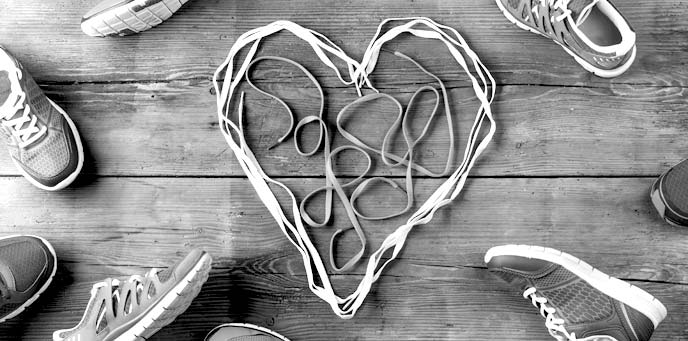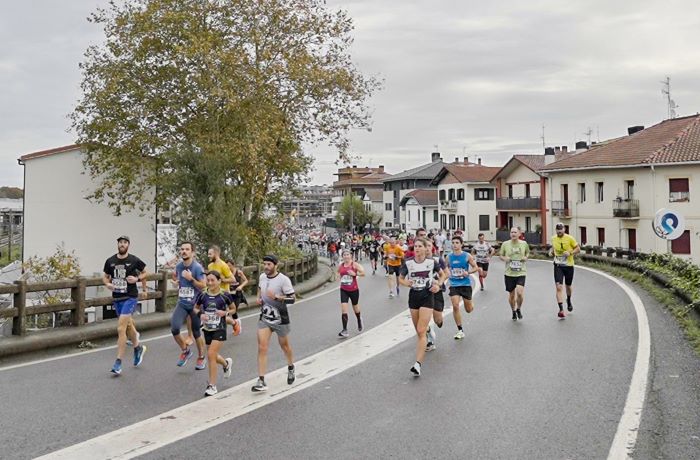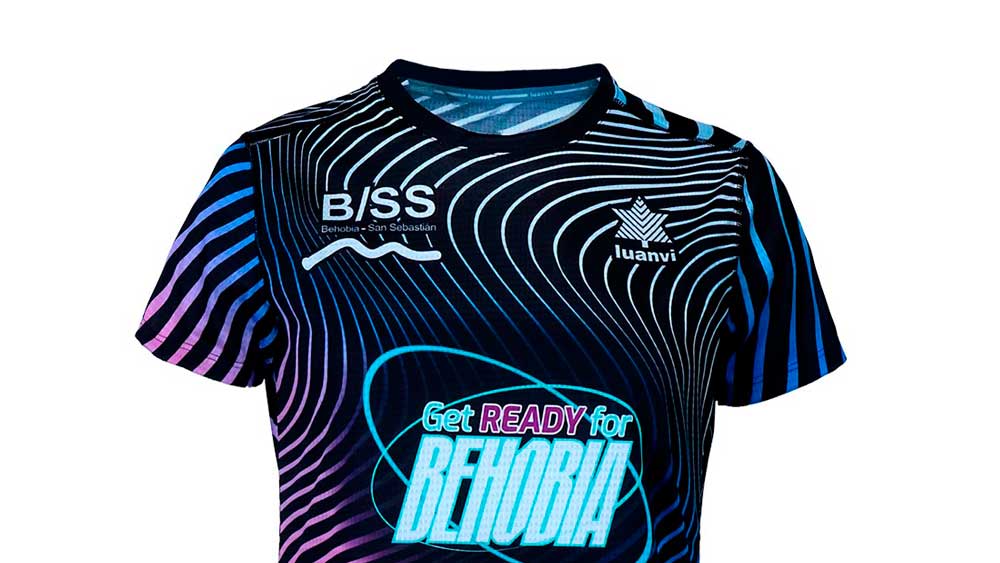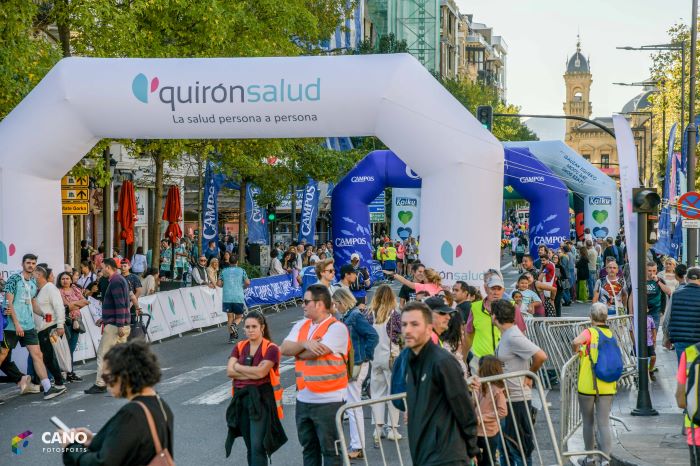Sportsmen and sportswomen are the healthiest members of our society and have a much lower risk of contracting cardiovascular diseases, some cancers, diabetes and dementia than people of the same age who do not sport.
This is due to the fact that frequent physical exercise reduces considerably the risk of contracting many diseases among old people such as heart attacks, angina, heart failure, strokes, high blood pressure, obesity, type II diabetes, osteoporosis, arthrosis, and rheumatoid arthritis, several types of cancer, depression, dementia, fibromyalgia and dependency.

Moreover, physical exercise is a very good tool, sometimes the best, to treat all these diseases, once they have been diagnosed. For this reason, many Scientific Associations and Public Institutions recommend and promote physical exercise among people of all ages.
The majority of these sudden deaths are due to heart problems and they are more frequent among people who train less than 3 days a week than in people who train more often.
The risk of these sudden deaths among competing athletes is very low, however, for the last few years studies have been run to find the most appropriate and effective way of detecting and treating people with a greater risk of sudden death during competition.
Although the benefits of physical exercise far outweigh the risks, on rare occasions some sportsmen or women have a heart condition or even die suddenly and unexpectedly while practicing sport or just afterwards.
There is currently a wide-ranging debate among different internationally recognised Scientific Associations (European Association of Cardiovascular Prevention and Rehabilitation: EACPR; American Heart Association: AHA; American College of Cardiology: ACC; American College of Sports Medicine: ACSM) on the real incidence of sudden death in competition compared to that of a sedentary population. Whether it is appropriate to have a medical check up prior to a sports competition, the type of assessment or check up to perform, its value for money, the negative consequences of false positives (when a mistaken medical diagnosis might wrongly prevent an athlete from doing their favourite sport) or the priority of allocating public funding to detecting and preventing this problem.
This debate means that there is no unanimous opinion on which is the best, most practical and effective way of detecting these sudden deaths. As an example, a work recently published in the European Heart Journal studied the number and type of serious accidents that occurred between 2006 and 2012 during endurance running races in the Paris region (512,000 athletes). These races require a medical certificate to enter. The study results showed that the number of incidents or serious diseases that took place in those races was no less than the ones seen in races where a medical certificate was not required to participate.
Although there is no all-round unanimity, bearing in mind the opinion of the previously mentioned Scientific Associations, one fast and simple frontline prevention measure to try and detect which athletes are at risk from a heart attack or sudden death during the event is to respond to a questionnaire on warning signs and symptoms. For this reason, the Behobia-San Sebastián race organisation recommends that all participants in this race should answer the signs and symptoms questionnaire before signing up. This questionnaire has been drawn up by the Behobia-San Sebastián Medical Advisory Committee working from recommendations provided by the aforementioned Scientific Associations. No medical supervision is required for this YES/NO questionnaire. The American College of Sports Medicine (ACSM) recommends that a person can compete if they have been training at least three days a week, 30 minutes per day, at a moderate to high intensity, for the last three months and they have answered "NO" to all the questions on the questionnaire. On the contrary, if there are any "YES" answers on the signs and symptoms questionnaire (3 to 13 questions), all the Scientific Associations recommend that the athlete should visit a sports doctor or a cardiologist for a check up. The signs and symptoms given in the questionnaire should also be taken into account during the race because, should they appear, it is advisable to stop and see a doctor.
The questionnaire is voluntary, anonymous and personal; it will only be recorded on the registration form whether it has been completed without matching the participant with their answers. If it was not possible to complete it in the moment you are making the resgsitration, we recommend you to do it later on through the website.
B/SS Medical advisory committee
Javier Barrera (Rehabilitation Physician, Osakidetza, and experienced runner-19 BSS and 24 marathons-), Esteban Gorostiaga (Sports Physician, Director of CEIMD -Government of Navarra-); Xabier Valencia (Rehabilitation Physician, Osakidetza); Zigor Madaria (Cardiologist, Osakidetza and IMQ), Félix Zubia (Critical Care Physician, Osakidetza and Red Cross -in charge of medical care for runners in the BSS since 2002-), José I Emparanza (Clinical Epidemiologist, Osakidetza)
Most relevant consulted bibliography
- ACSM, Guidelines for Exercise Testing and Prescription, 2005
- Albert et al. New Engl. J.Med. 343(19): 1355-1361, 2000
- Aranceta Med.Clin.(Barcelona) 123(18:686-691, 2004
- Balady et al. Circulation 97:2283-2293, 1998
- Basavarajaiah et al. J.Am.Coll.Cardiol. 51: 2256-2262, 2008
- Blair et al. JAMA 262(17):2395-2401, 1989
- Bessem et al. Br.J.Sports Med. 43:708-715, 2009
- Borjesson et al. Eur. J.Cardiol.Prev.Rehab. 18(3): 446-458, 2011
- Corrado et al. N.England J.Med. 339: 364-369, 1998
- Corrado et al. J.Am.Coll.Cardiol. 42: 1959-1963, 2003
- Corrado et al. Eur.Heart J. 26:516-524, 2005
- Corrado et al. JAMA 296: 1593-1601, 2006
- Corrado and Thiene Heart Rhythm 4:520-524, 2007
- Corrado et al. Textbook of Cardiovascular Medicine 1215-1237, 2009
- Corrado et al. Eur.Heart J. 31:243-259, 2010
- Corrado et al. Eur.Heart J. 32:934-944, 2011
- Drezner and Rogers Heart Rhythm 3:755-759, 2006
- Fletcher et al. Circulation 128:873-934, 2013
- Fuller Med.Sci.Sports Exerc. 32:887-890, 2000
- Gerardin et al. Eur.Heart J. pii:ehv675, 2015
- Gibbons et al. Circulation 106:1883-1892, 2002
- Glover y Maron JAMA 279:1817-1819, 1998
- Goff et al. Circulation 129(5): Sup 2: 549-S73, 2014
- Holst et al. Heart Rhythm 7:1365-1371, 2010
- Jamnik et al. Appl.Physiol.Nutr.Metab. 36:S6-S13, 2011
- Janai J.Clin.Forensic Med. 7: 88-91, 2000
- Lauer et al. Circulation 112:771-776, 2005
- Laukkanen et al. J.Intern.Med. 262:263-272, 2007
- Leslie et al. Circulation 125(21):2621-2629, 2012
- Liberthson et al. New Engl.J.Med. 334:1039-1044, 1998
- Maron et al. New Engl. J.Med. 343:1409-1411, 2000
- Maron et al. J.Am.Coll.Cardiol. 42:1687-1713, 2003
- Maron et al. Circulation 109:2807-2816, 2004
- Maron and Zipes J.Am.Coll.Cardiol. 45(8): 1318-1321, 2005
- Maron J.Am. Coll.Cardiol. 45:1373-1375, 2005
- Maron et al. Circulation 115:1643-1655, 2007
- Maron et al. Am.J.Cardiol. 104:276-280, 2009
- Maron et al. Circulation 130:1303-1334, 2014
- Maron et al.J.Am.Coll.Cardiol. 64:1479-1514, 2014
- Maron et al. J.Amer.Coll.Cardiol. 132(22):e256-e261, 2015
- Mittleman et al. New Engl. J.Med. 329(23): 1677-1683, 1993
- Montgomery et al. Am.J.Cardiol. 96:270-275, 2005
- Myerburg and Vetter Circulation 116:2616-2626, 2007
- Navi and Ioannidis, BMJ 347: f5577, 2013
- Riebe et al. Med.Sci.Sports Exerc. 47(8):2473-2479, 2015
- Rognmo et al. Circulation 126(12):1436-1440, 2012
- Sharma et al. New Engl.J.Med. 369(21):2049-2053, 2013
- Siscovick et al. New Engl.J.Med. 311(14):874-877, 1984
- Siscovick et al. Arch.Intern.Med. 151:325-330, 1991
- Tanaka et al. Med.Sci.Sports Exerc. 38:2-6, 2006
- Thompson and Levine JAMA:525-528, 2007
- Thompson Circulation 119: 1072-1074, 2009
- Whitfield et al. Circulation 129(10): 1113-1120, 2014
- Viskin Heart Rhythm 4:525-528, 2007
- Warburton et al. Int.J.Beav.Nutr.Phys.Act. 7(1):39, 2010
- Wheeler et al. Ann.Intern.Med. 152:276-286, 2010




